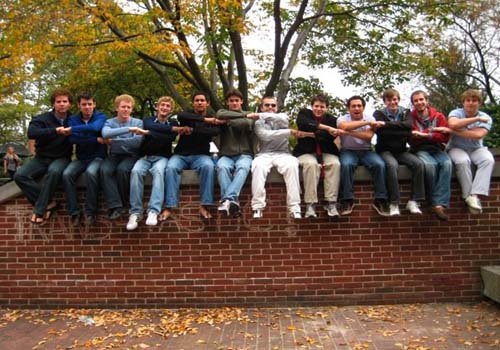So much to do, so little time. So sleep suffers among college students
By Jessica Watkins
It’s 10 p.m. on a Tuesday-do you know where Adelyn Kishbaugh is?
She’s not asleep under her dark blue bedspread. She’s not brushing her teeth in anticipation of a long winter’s nap. Instead, she’s hurriedly packing her backpack with chemistry books.
“It’s this stupid glow stick project,” she sighs. “The only time everyone in my group was free was 10 p.m. on a Tuesday. And our glow stick has been glowing in the freezer for almost a month. Can you believe that?”
At first glance Kishbaugh, 20, seems energetic enough. As a sophomore English major at Bryn Mawr College, she takes on a slew of academic responsibilities during the day.
And then there are practices for her rugby team, the Horned Toads. And there are rugby games. And there are Student Government Association meetings.
And she has friends who are acting in each of the two plays on campus, so she has to attend both of those. And she has friends in two different a cappella  groups, so she has to attend their shows. And then she has to clean her room, a testament to all of the above strewn with playbills, posters, and rugby gear.
groups, so she has to attend their shows. And then she has to clean her room, a testament to all of the above strewn with playbills, posters, and rugby gear.
She’s only slacked off on one of her daily duties-sleeping.
Kishbaugh is not alone-a recent study by the National Sleep Foundation found that 63 percent of college students do not get enough sleep, and those at Bryn Mawr are no exception. In a survey, close to 54 percent of Bryn Mawr students considered themselves sleep deprived.
And don’t think these women are awake chatting or watching TV-87 percent of Bryn Mawr students blame schoolwork for transforming them into Ladies of the Night.
“My sleep schedule varies intensely,” Kishbaugh explains while sitting cross-legged on her bed. “How late I stay up depends on what I have due the next day.”
Does she pull all-nighters?
“Oh yeah.”
Continue reading





 Counterpoint was founded in 2007 by two Bryn Mawr students disgruntled with their former troupe, the Night Owls. Counterpoint started out as coed, but is now all women, though its members attend both Bryn Mawr and Haverford. Of the original male contingent, one left to focus on academics, one graduated, and one got into the S-Chords, “which he’d dreamt about since birth,” said now-senior Ryan Mulligan, the last man standing. When Counterpoint made the all-female switch, Mulligan hung around to help with administrative work.
Counterpoint was founded in 2007 by two Bryn Mawr students disgruntled with their former troupe, the Night Owls. Counterpoint started out as coed, but is now all women, though its members attend both Bryn Mawr and Haverford. Of the original male contingent, one left to focus on academics, one graduated, and one got into the S-Chords, “which he’d dreamt about since birth,” said now-senior Ryan Mulligan, the last man standing. When Counterpoint made the all-female switch, Mulligan hung around to help with administrative work.